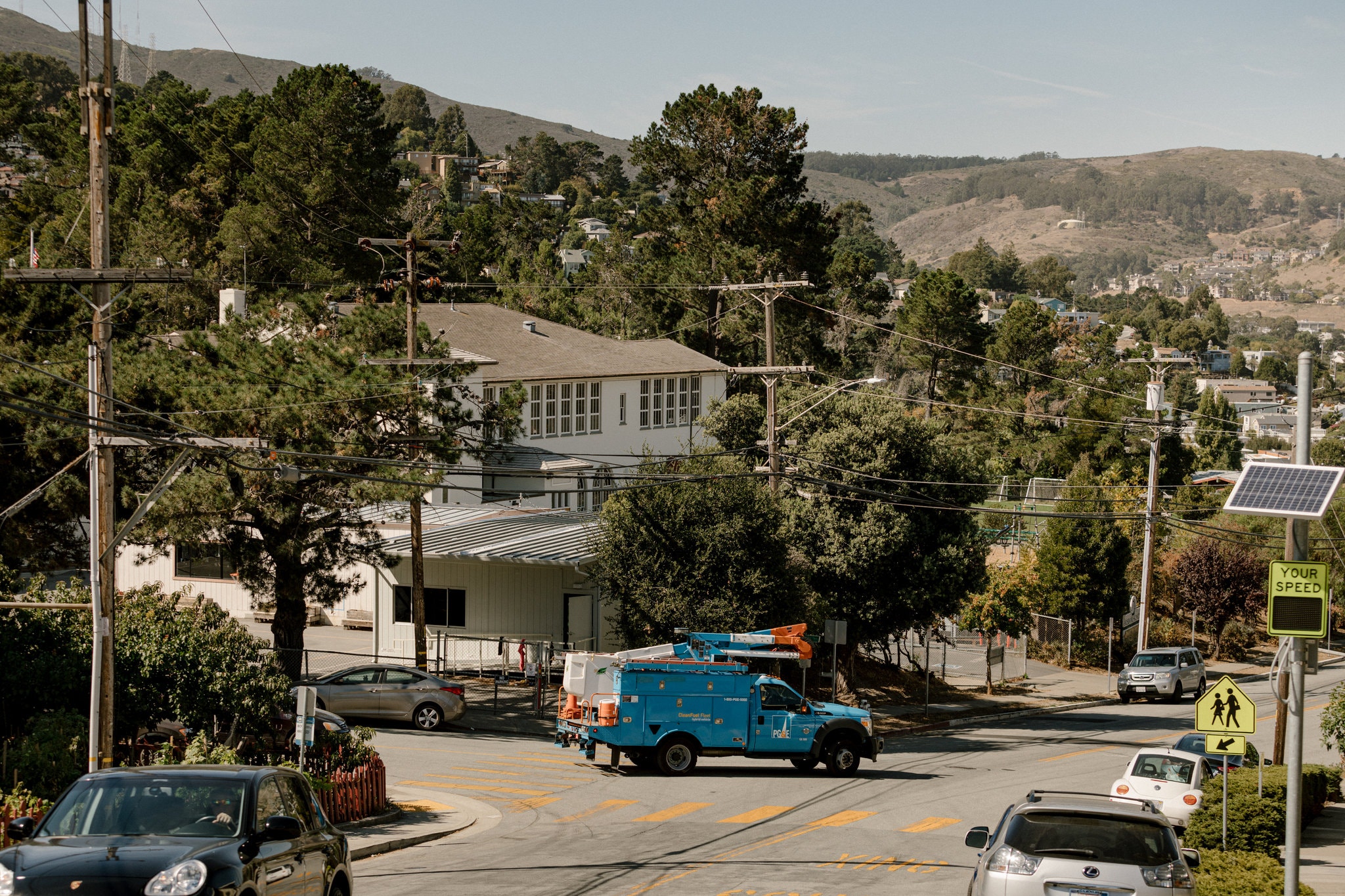This article was originally published on Oct. 12. It has been updated to reflect the latest developments.
California has a reputation as a haven for technological innovation. But the state's largest power utility is using the lowest of low-tech solutions - rolling blackouts - to protect dry landscapes from live power lines that could spark or overheat and set wildfires.
Responding to forecasts of strong winds, the utility, Pacific Gas & Electric, expanded its blackout zone in Northern California on Saturday to include 940,000 customers – affecting as many as 2.7 million people - even as the local authorities ordered the evacuation of 50,000 residents because of the spreading Kincade fire. The outage comes on the heels of another major blackout by the utility earlier this month.
There is technology, though, that can reduce the need for some of the most dangerous power lines and limit the extent of territory left in the dark.
"It's an incredible travesty, this sort of really crude and unsophisticated approach for dealing with what is a very serious issue," said Jack Brouwer, an engineering professor and director of the National Fuel Cell Research Center at the University of California, Irvine.
"We have technological solutions for this that exist," Mr. Brouwer said. Unfortunately, he said, California regulations and planning have been "insufficient for that technology to be used instead of just turning the power off."
One of the approaches, called microgrids, involves using power sources like solar panels and diesel engines to provide electricity for a community, a cluster of buildings or even a manufacturing site. Because that electricity circulates only locally, a microgrid can eliminate the need to transmit power over long distances.
Depending on how the microgrid is designed, some or all of the lights can stay on, whether or not the main grid is energized.
Amory Lovins, a co-founder and former chief scientist of Rocky Mountain Institute, a nonprofit group that focuses on energy, said that the vast majority of power outages begin with failures of the grid - the transmission and distribution lines and the equipment surrounding them - rather than with power plants. In places like California, those failed power lines can generate fires.

"That's part of the logic of microgrids," Mr. Lovins said. "It's not big enough to need long-distance transmission, which is where a lot of the fire issues are arising."
"It could be part of the solution in California," Mr. Lovins added.
Some industry experts defended PG&E's use of the blackouts.
"It's one of the tools in the toolbox, and given that safety is paramount, they are erring on the side of caution," said Scott Aaronson, vice president for security and preparedness at the Edison Electric Institute, an industry group. "It's not exactly an elegant solution, but it does save lives and property."
He added, "They're doing what they can given the topography that they serve and where the threats of ignition are."
A town that uses microgrids can disconnect from the main grid either temporarily or permanently, depending on how the microgrid is designed. Some communities that have experienced frequent blackouts are taking a closer look at using microgrids to unplug themselves from the broader power system during emergencies. That way, they can use a variety of local power sources, like diesel generators, solar panels, gas turbines or fuel cells.
Fuel cells are a particularly efficient power generator. Both fuel cells and gas turbines usually rely on another grid - the highly reliable network of natural gas pipelines beneath the ground.